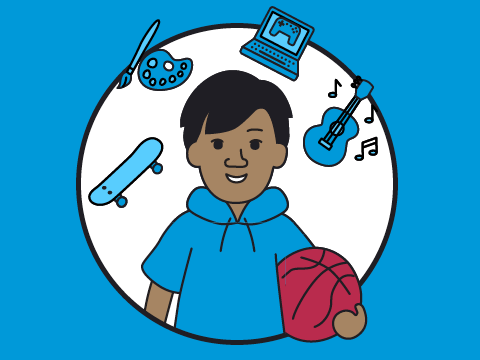
Primary school ākonga profile example
An example of an Aotearoa New Zealand primary school ākonga profile, developed by the adults around her.
Getting to know your ākonga means including their voice, vision, strengths, and interests in all transition decision-making. Transitions need to be mana-enhancing for ākonga and show visible evidence of their voice in decision-making.
Current page section: Get to know ākonga | Te mōhio ki ngā ākonga
Go to top of current page: Get to know ākonga | Te mōhio ki ngā ākonga
Go to top of current page: Get to know ākonga | Te mōhio ki ngā ākonga
Go to top of current page: Get to know ākonga | Te mōhio ki ngā ākonga
Understanding ākonga strengths, needs, and preferences before their transition ensures a smoother adjustment, fosters a sense of belonging for them and their whānau, and supports their success in the new school environment.

Source: Ministry of Education | Te Tāhuhu o te Mātauranga
A transition profile is a summary of ākonga strengths, needs, interests, and goals specific to the transition process from one setting to the next.
Talk with current kaiako about ākonga in their environment. What is needed to ensure the transition is successful? What are ākonga strengths? What resources do they prefer? What type of transition profile would work best?
Some innovative profiles could include:
Personalising ākonga profiles enables transitions to become a dynamic, evolving tool that guides learning and provides a comprehensive understanding of ākonga journeys.
Personalise ākonga profiles using Universal Design for Learning (UDL) guidelines:
Representation – visual supports (photos, symbols, diagrams) alongside text:
Action and expression – show how ākonga work best:
Engagement – ask:
Consider learning maps:
Learning maps are another practical approach for kaiako and parents to support learners in fun and energising ways to analyse and improve their learning. You can read more about this here: Infinity learning maps.

This holistic approach focuses on asking about the purpose of the information gathered about the learner to inform planning. It also seeks whānau engagement.
Publisher: Barbara Bray

An example of an Aotearoa New Zealand primary school ākonga profile, developed by the adults around her.
Download DOC (613 KB)

An example of an Aotearoa New Zealand secondary school ākonga profile.
Download PNG (655 KB)
More suggestions for implementing the strategy “Develop ākonga partnerships | Te mahi tahi me ngā ākonga”:
Current page Get to know ākonga | Te mōhio ki ngā ākonga
Return to the guide “Te Ara Ako – Learning pathways in times of change”
Loading...
Search result for ' ' returned results. Did you want to Search all of TKI?
This information was downloaded/printed from the Ministry of Education's website "Inclusive Education". Except where otherwise noted it is Crown Copyright 2018.
Information on the Inclusive Education website is regularly updated so we recommend you check the website version of this information to ensure it remains current.